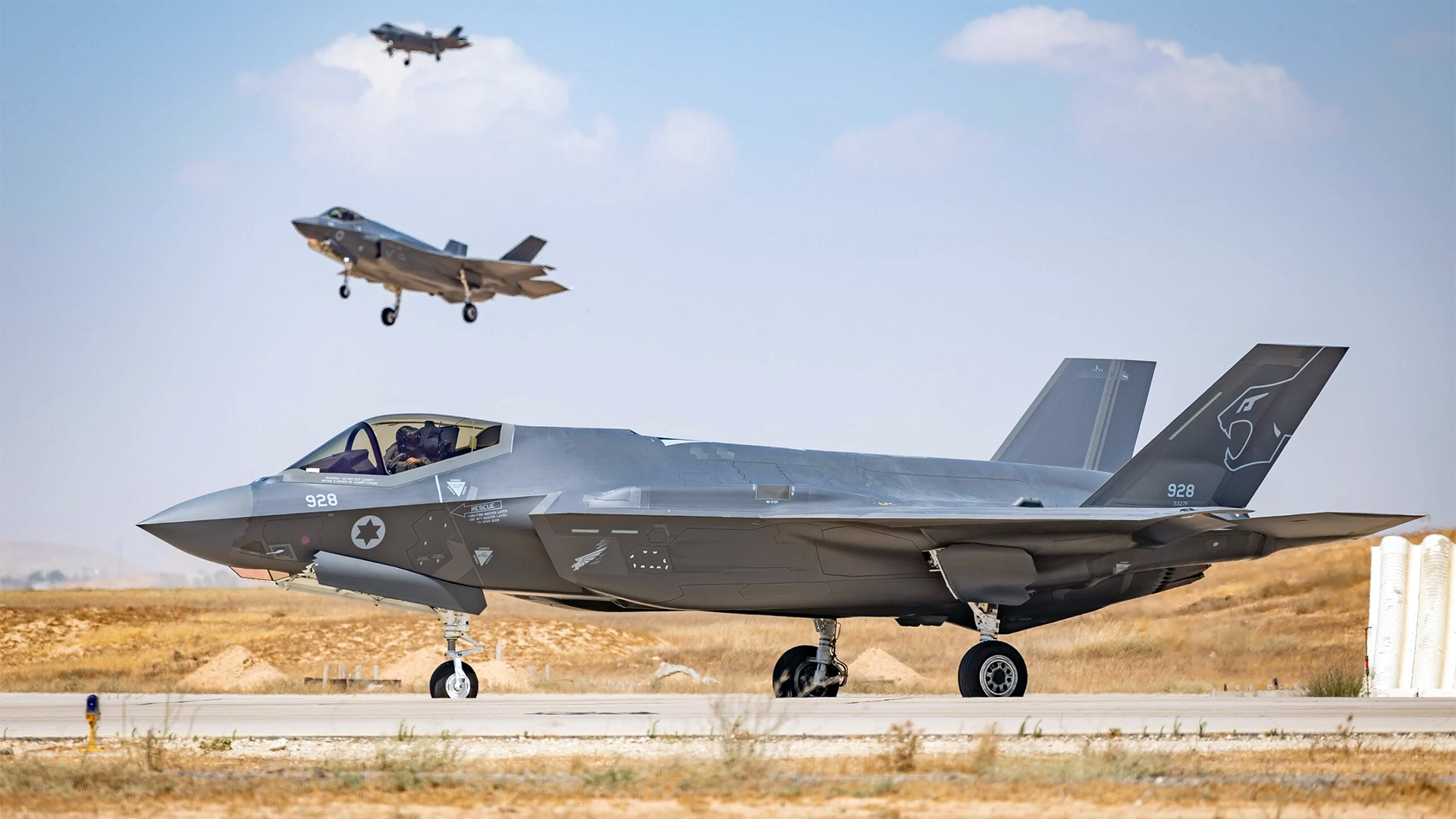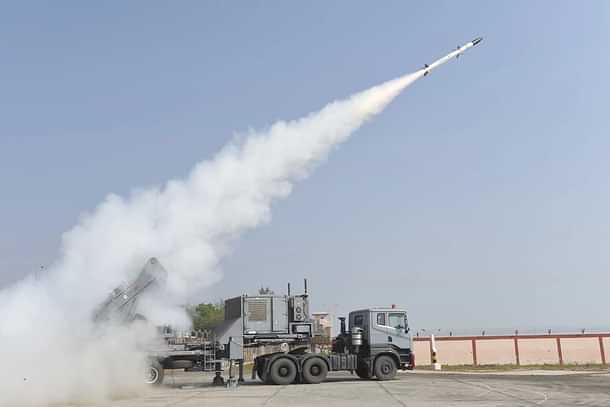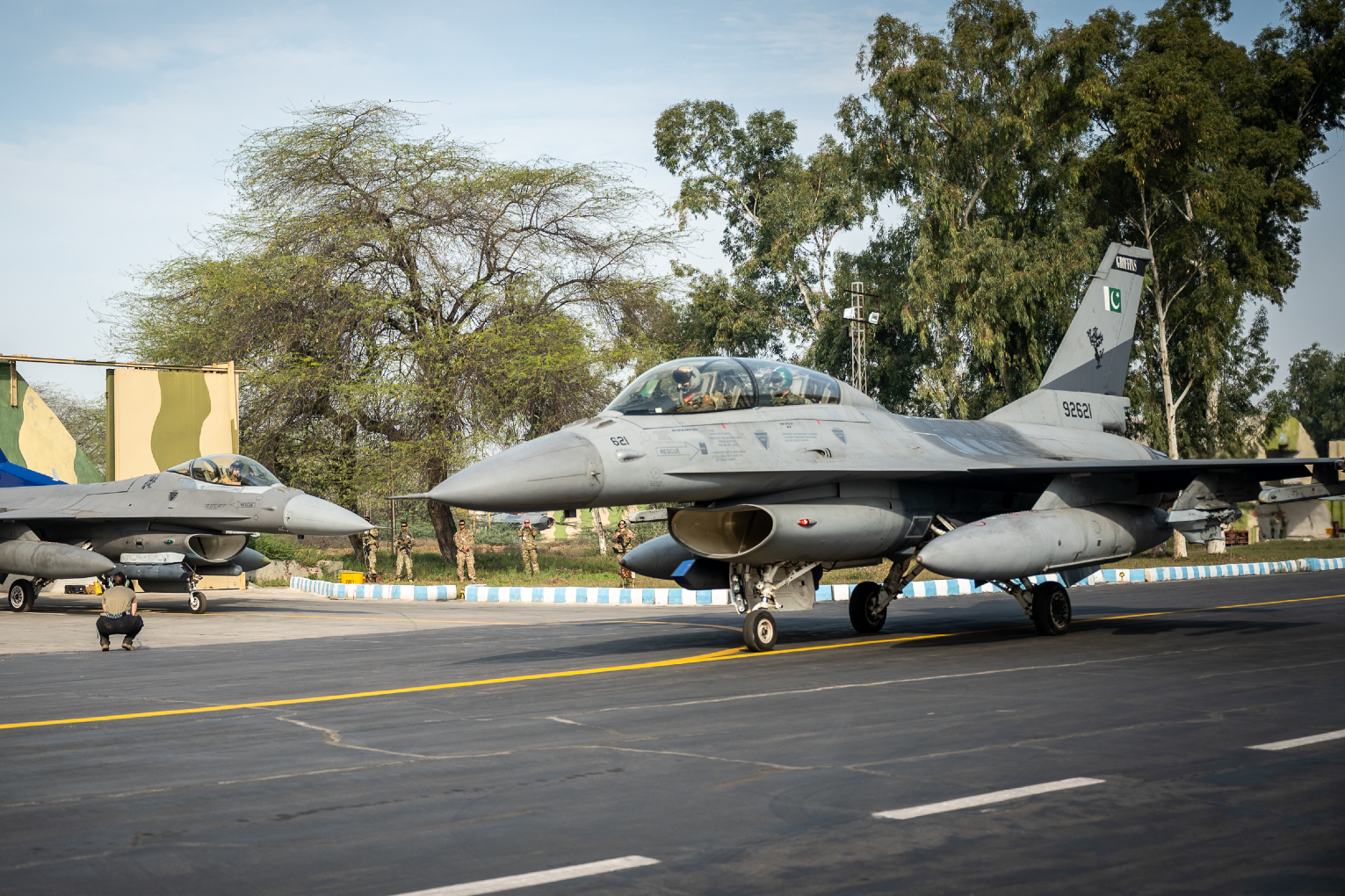AFI
SOURCE: AFI


Russia’s aerospace industry has thrown a tantalizing offer India’s way: the Product 177S, an advanced engine poised to power both the Indian Air Force’s (IAF) Super-30 upgrade program and the fifth-generation Advanced Medium Combat Aircraft (AMCA) MkII. Unveiled by Rostec’s United Engine Corporation (UEC) at Aero India 2025, this upgraded derivative of the AL-41F1—infused with elements from the AL-51—promises enhanced thrust, stealth features, and longevity. Yet, in a surprising twist, Russia may not fly a jet with the 177S until an international customer commits to it, a condition that could hinge on India’s decision, according to posts on X and industry buzz.
The Product 177S is no mere tweak—it’s a significant step up from the AL-41F1, which powers the Su-57 Felon and India’s 260-strong Su-30 MKI fleet. With a reported maximum thrust of 142 kN (14,500 kgf) and a thrust-to-weight ratio of 9.5:1, it outmuscles the AL-31FP (123 kN) currently driving the MKIs. Drawing on the AL-51—developed for the Su-57’s second-stage engine (Izdeliye 30)—the 177S incorporates stealth-treated thrust vector control (TVC) nozzles, reducing infrared and radar signatures, alongside improved fuel efficiency and a service life exceeding the AL-31FP’s 4,000 hours. Russia pitches it as a drop-in solution, compatible with HAL’s existing assembly lines, sweetened by offers of local manufacturing under “Make in India.”
Continue readingSOURCE: AFI


For years, France’s Dassault Rafale has been a standout in the global fighter jet market—a multirole aircraft boasting advanced technology, versatility, and combat-proven credentials. Yet, Rafale’s reign may soon face a formidable challenge, not from rival heavyweights like the F-35 or Su-57, but from two emerging contenders: South Korea’s KF-21 Boramae and India’s Tejas MkII. These aircraft promise to deliver comparable capabilities—often with superior avionics and weapons packages—at a fraction of the cost, exposing what some critics see as France’s Achilles’ heel: an exorbitant pricing model driven by greed.
The Rafale has long been a premium product, and its price tag reflects that. While its advanced radar, electronic warfare systems, and multirole flexibility have won it contracts in countries like India, Qatar, and Egypt, the hidden costs of ownership are starting to raise eyebrows. Maintenance, upgrades, and weapons integration for the Rafale come with a steep bill—one that nations are increasingly unwilling to pay.
Continue readingSOURCE: AFI


In a significant stride towards self-reliance in defense technology, the Centre for Airborne Systems (CABS), a premier laboratory under the Defence Research and Development Organisation (DRDO), has successfully developed and established complete capability to design, develop, and manufacture the highly complex radomes for the Airborne Warning and Control System (AWACS). This achievement marks a major milestone in India’s quest to bolster its indigenous defense capabilities and reduce dependence on foreign technologies.
A radome (radar dome) is a protective enclosure that houses radar antennas, safeguarding them from environmental factors such as wind, rain, and extreme temperatures while allowing electromagnetic signals to pass through with minimal distortion. In the context of AWACS, radomes are critical components that shield the sophisticated radar systems mounted on airborne platforms, enabling long-range surveillance, command, and control capabilities. These structures must be aerodynamically efficient, lightweight, and capable of withstanding the stresses of high-altitude flight, making their development a highly complex and technologically challenging task.
Continue readingSOURCE: AFI


India’s quest for a robust and modern air force has gained significant momentum in recent years, driven by rising regional tensions and the need to counter sophisticated adversaries like China and Pakistan. With the United States recently signaling its willingness to offer the Lockheed Martin F-35 Lightning II to India, a unique opportunity has emerged for New Delhi to bolster its stealth capabilities. However, to maximize the strategic value of this potential acquisition, India could look to emulate Israel’s approach with its customized F-35I Adir variant. This article explores how India could procure F-35 jets tailored to its specific needs, akin to Israel’s model, and delves into what makes the F-35I Adir a standout among the global F-35 fleet.
Israel’s procurement of the F-35I Adir offers a compelling example of how a nation can adapt a foreign-built platform to align with its unique security requirements while maintaining operational independence. Unlike most F-35 operators, Israel negotiated significant concessions from the United States and Lockheed Martin, allowing it to integrate indigenous systems and establish a degree of self-reliance. This approach has made the F-35I Adir distinct from other variants, such as the standard F-35A, F-35B, and F-35C used by the U.S. and its allies.
Continue readingSOURCE: AFI


India’s next-generation air defense capabilities are poised for a critical test as the Akash-NG (New Generation) surface-to-air missile (SAM) prepares for high-altitude trials within the next two months. Under the watchful eyes of the Defence Research and Development Organisation (DRDO) and the Indian Army, these trials will push the system to its limits in rugged, mountainous terrain—likely along the northern borders—marking a significant step toward its operational deployment. With developmental testing nearing completion, the Akash-NG is on track to bolster India’s ability to counter advanced aerial threats, from fighter jets to drones, in challenging environments.
The Akash-NG, an advanced iteration of the indigenous Akash SAM system, has been in development since 2016, with a budget of ?470 crore (approximately $78 million in 2023 terms). Designed by DRDO’s Defence Research and Development Laboratory (DRDL) in Hyderabad, and produced by Bharat Dynamics Limited (BDL) and Bharat Electronics Limited (BEL), this missile promises enhanced lethality over its predecessors. Unlike the original Akash, which has a range of 25-30 kilometers and an altitude ceiling of 18 kilometers, the Akash-NG extends its reach to 70-80 kilometers, thanks to a dual-pulse solid rocket motor and a sleek, lightweight design.
Continue readingSOURCE: AFI


The Indian Space Research Organisation (ISRO) has embarked on an ambitious journey to revolutionize space travel with the development of a nuclear thermal rocket propulsion system, incorporating a cutting-edge 10 kW RF-powered plasma engine. This initiative, detailed in recent announcements, positions India at the forefront of advanced propulsion technologies, promising to unlock faster, more efficient interplanetary and deep-space missions.
With a specific impulse (Isp) ranging from 4,000 seconds at 300 mN thrust to an impressive 10,000 seconds at 120 mN, this engine leverages radio frequency (RF) excitation in helicon mode to generate plasma, offering unparalleled flexibility and scalability. Here’s a closer look at this groundbreaking endeavor and its potential to redefine India’s role in the cosmic frontier.
Continue readingSOURCE: AFI

In a provocative critique, Ashley Tellis, a former advisor to the U.S. Department of State and a senior fellow at the Carnegie Endowment for International Peace, has raised serious doubts about the operational effectiveness of the BrahMos supersonic cruise missiles recently acquired by the Philippines.
Speaking to India’s media outlet The Print in an article published on February 28, 2025, Tellis argued that while the $375 million deal marks a significant milestone in Philippines-India defence ties, the Southeast Asian nation lacks the critical infrastructure to fully leverage these advanced weapons. Without robust Command, Control, Communications, Computers, Intelligence, Surveillance, and Reconnaissance (C4ISR) capabilities, he warned, the BrahMos missiles risk being reduced to a symbolic gesture rather than a transformative military asset.
Continue readingSOURCE: AFI

In a major boost to India’s defence export ambitions, Solar Industries India Limited, a Nagpur-based explosives and ammunition manufacturer, announced on February 28, 2025, that it, along with its subsidiary, has secured export orders worth ?2,150 crore for the supply of defence products.
Solar Industries India Limited, renowned for its expertise in explosives, propellants, and ammunition systems, revealed that the orders encompass a range of defence products, though specific details about the items and the recipient countries remain undisclosed due to strategic sensitivities. The company, along with its subsidiary Economic Explosives Limited (EEL), will collaborate to fulfill the contract, leveraging their combined manufacturing capabilities and technological prowess.
Continue readingSOURCE: AFI


The Philippines is poised to deepen its defense partnership with India, expressing keen interest in acquiring the Akash Air Defence System after the successful induction of the BrahMos supersonic cruise missile in 2022. This development, reported widely in early 2025, signals Manila’s intent to bolster its military capabilities amid escalating tensions with China in the South China Sea. The potential deal, valued at over $200 million, could mark India’s second major defense export to the Philippines, reinforcing bilateral ties and India’s growing stature as a global arms supplier.
The Philippines’ interest in the Akash system follows the landmark $375 million BrahMos deal, India’s largest-ever defense export, finalized in January 2022. The BrahMos, a supersonic anti-ship and land-attack cruise missile jointly developed by India and Russia, has already enhanced the Philippine Marine Corps’ coastal defense capabilities, with deliveries commencing in April 2024. Deployed along the country’s western seaboard, the BrahMos provides Manila with a credible deterrent against maritime incursions, particularly in the contested West Philippine Sea.
Continue readingSOURCE: AFI


In a significant advancement for India’s indigenous unmanned aerial vehicle (UAV) program, the Defence Research and Development Organisation’s (DRDO) Aeronautical Development Establishment (ADE) has successfully completed engine ground runs and taxi trials for two prototypes of the Archer-NG (Next Generation) armed UAV. The milestone, achieved in early February 2025, paves the way for the UAV’s highly anticipated first flight, expected within the next month. This development marks a crucial step toward bolstering India’s capabilities in aerial reconnaissance and precision strike missions.
The Archer-NG, an advanced iteration of the earlier Rustom series, is being developed by ADE in Bengaluru as a Medium Altitude Long Endurance (MALE) UAV designed for both surveillance and combat roles. With a focus on enhancing India’s self-reliance in defense technology, the Archer-NG promises superior performance over its predecessors, featuring stealth characteristics, an increased operational ceiling, and the ability to carry precision-guided munitions.
Continue readingSOURCE: AFI


The Pakistan Air Force (PAF) has long relied on its fleet of U.S.-supplied F-16 fighter jets as a cornerstone of its aerial combat capabilities. These advanced aircraft, however, come with stringent operational restrictions imposed by the United States, including their confinement to designated airbases. This arrangement, rooted in decades of U.S.-Pakistan military cooperation, has gained renewed attention following recent developments, such as the approval of a $397 million package by U.S. President Donald Trump in February 2025 to sustain and monitor Pakistan’s F-16 fleet. T
his article explores how Pakistani F-16s are operated out of designated operational airbases, the mechanisms ensuring compliance, and the implications for regional security, particularly in the context of India-Pakistan tensions exemplified by the 2019 Balakot airstrike.
Continue readingSOURCE: AFI


In a significant step toward bolstering maritime security in the Indian Ocean Region (IOR), India formally handed over the Indian Coast Guard Interceptor Boat C-449 to the Seychelles Coast Guard on February 26, 2025. The vessel, now commissioned as Patrol Boat (PB) Boudeuse, was presented during a ceremony presided over by Seychelles President Wavel Ramkalawan, underscoring the deepening defense partnership between the two nations. This handover marks the fifth Made-in-India patrol boat gifted to Seychelles, reinforcing India’s commitment to its “Security and Growth for All in the Region” (SAGAR) vision, championed by Prime Minister Narendra Modi.
The event, held at the Seychelles Coast Guard base on Île Perseverance, highlighted the strong bilateral ties between India and Seychelles, a strategically located archipelago in the western Indian Ocean. The PB Boudeuse, an advanced interceptor craft designed for coastal defense and surveillance, enhances Seychelles’ ability to patrol its vast Exclusive Economic Zone (EEZ) and tackle emerging threats such as piracy, illegal fishing, and drug trafficking. With a top speed exceeding 45 knots and a robust design tailored for rapid response, the vessel is a valuable addition to the Seychelles Coast Guard’s fleet.
Continue readingSOURCE: AFI


Defence Research and Development Organisation (DRDO) recently showcased a dummy scale model of its Hypersonic Glide Vehicle (HGV) mounted on a Tatra-based Transporter Erector Launcher (TEL) at the Defence exhibition held at Gachibowli stadium, Hyderabad. This display, unveiled follows the historic first test of India’s long-range hypersonic missile on November 16, 2024, from Dr. APJ Abdul Kalam Island off the coast of Odisha. The successful trial marked India’s entry into an elite club of nations with operational hypersonic technology, and the latest showcase signals DRDO’s intent to operationalize this game-changing weapon system for the Indian Armed Forces.
The November 2024 test of India’s first long-range hypersonic missile was a watershed moment. Designed to carry various payloads over distances exceeding 1,500 km, the missile demonstrated its ability to perform terminal maneuvers and strike with pinpoint accuracy, as confirmed by flight data from downrange ship stations. Launched from a hermetically sealed canister, the missile utilized attitude control thrusters before its solid rocket motor ignited, propelling it to hypersonic speeds—exceeding Mach 5 (approximately 6,200 km/h). Defence Minister Rajnath Singh hailed it as a “historic achievement,” placing India alongside Russia, China, and the United States in the hypersonic race.
Continue readingSOURCE: AFI


India’s quest to modernize its air defense capabilities has taken a significant step forward with the issuance of a Request for Proposal (RFP) for a successor to the aging L70 and Zu-23 anti-aircraft guns. According to Lt. Gen. D’Cunha, Deputy Chief of Army Staff (Capability Development and Sustenance), the RFP calls for 220 new artillery systems paired with cutting-edge smart ammunition. With trials slated to begin in July 2025 and a contract expected by May-June 2026, this initiative underscores the Indian Army’s commitment to self-reliance, explicitly ruling out imports and prioritizing indigenous solutions. The inclusion of smart ammunition promises to revolutionize air defense efficiency, marking a leap into next-generation warfare technology.
The L70 (40mm) and Zu-23 (23mm) guns, inducted into service decades ago, have been the backbone of India’s short-range air defense against low-flying aircraft, helicopters, and drones. While reliable in their era, these systems—rooted in Cold War designs—struggle to counter modern threats like stealth aircraft, precision-guided munitions, and swarms of unmanned aerial vehicles (UAVs). With obsolescence looming and maintenance costs rising, the Army recognized the urgent need for a successor that aligns with contemporary battlefield demands.
Continue readingSOURCE: AFI


In a historic milestone for the Indian Air Force (IAF), Flying Officer Tanushka Singh from Mangaluru is set to become the first woman pilot permanently assigned to the Jaguar fighter squadron. Hailing from a proud military family, Tanushka’s induction into the elite combat unit marks a significant step forward in breaking gender barriers within India’s armed forces. Her journey to the cockpit of the Jaguar, a deep-strike fighter jet, is both a personal triumph and a testament to the IAF’s evolving inclusivity.
Tanushka Singh, who proudly identifies as a “Kudla girl” from Mangaluru, Karnataka, will soon join the ranks of the IAF’s Jaguar squadron, a fleet renowned for its precision strike capabilities. Until now, no female pilot had been permanently assigned to fly the Jaguar, an Anglo-French aircraft that has been a mainstay of the IAF since its induction in 1979. While some women pilots have flown the jet on experiential sorties, Tanushka’s selection as a permanent member of the squadron sets a new precedent.
Continue reading